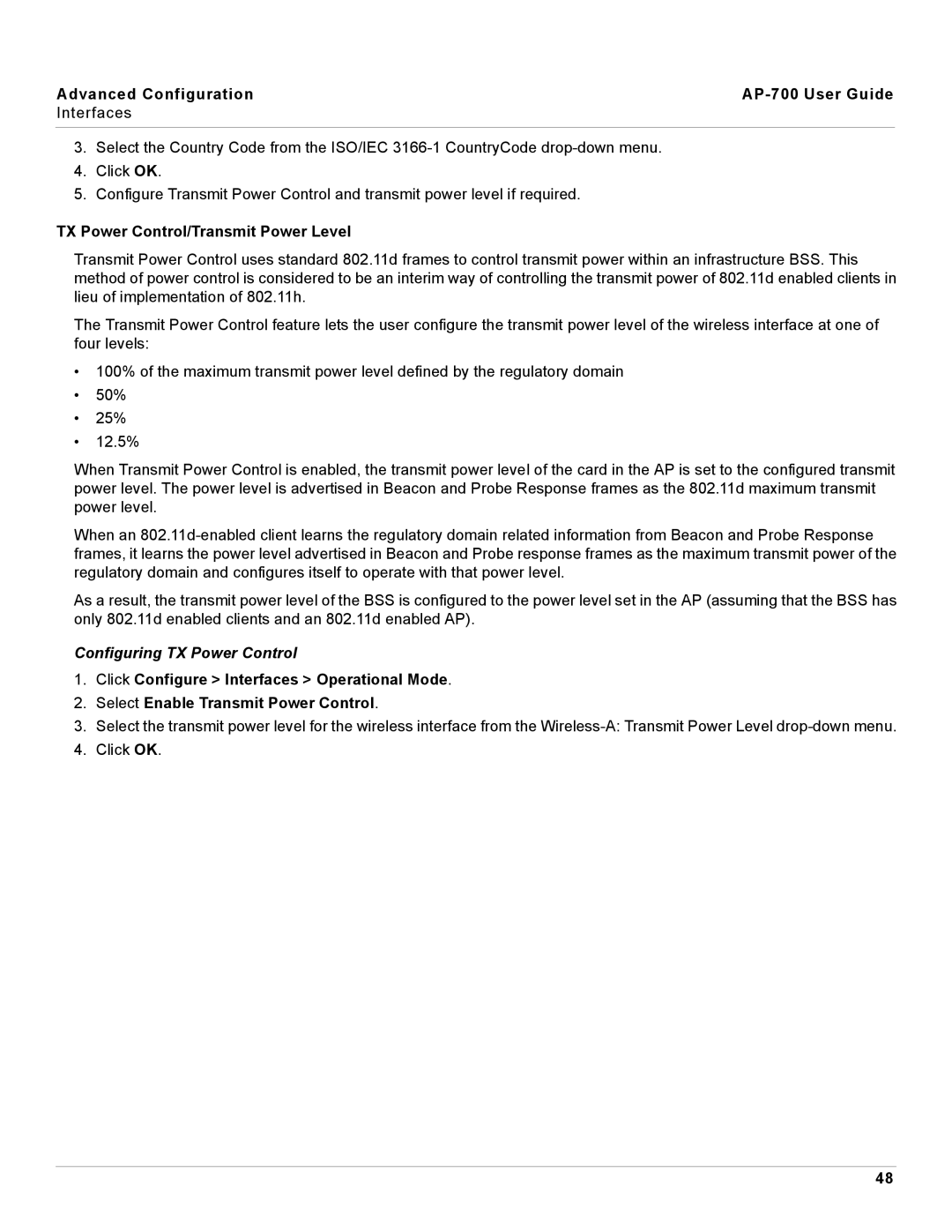Advanced Configuration |
|
Interfaces |
|
|
|
3.Select the Country Code from the ISO/IEC
4.Click OK.
5.Configure Transmit Power Control and transmit power level if required.
TX Power Control/Transmit Power Level
Transmit Power Control uses standard 802.11d frames to control transmit power within an infrastructure BSS. This method of power control is considered to be an interim way of controlling the transmit power of 802.11d enabled clients in lieu of implementation of 802.11h.
The Transmit Power Control feature lets the user configure the transmit power level of the wireless interface at one of four levels:
•100% of the maximum transmit power level defined by the regulatory domain
•50%
•25%
•12.5%
When Transmit Power Control is enabled, the transmit power level of the card in the AP is set to the configured transmit power level. The power level is advertised in Beacon and Probe Response frames as the 802.11d maximum transmit power level.
When an
As a result, the transmit power level of the BSS is configured to the power level set in the AP (assuming that the BSS has only 802.11d enabled clients and an 802.11d enabled AP).
Configuring TX Power Control
1.Click Configure > Interfaces > Operational Mode.
2.Select Enable Transmit Power Control.
3.Select the transmit power level for the wireless interface from the
4.Click OK.
48
